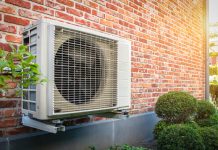The Importance of Balanced Attic Ventilation and Insulation
Blown-in insulation is one of the most efficient choices for attic insulation, helping homeowners achieve better energy efficiency, comfort, and sustainability. However, without proper attention to ventilation and moisture control, blown-in insulation may fall short of its potential. Optimizing attic insulation requires a balanced approach that ensures effective moisture management, proper airflow, and long-term insulation performance and this is what Blown in Insulation by TLS energy savers offers.
Industry research underscores how inadequate attic ventilation can lead to moisture accumulation, structural damage, and compromised insulation effectiveness. This guide dives into research-backed methods for enhancing blown-in insulation efficiency by integrating moisture control strategies and optimized ventilation solutions.
Understanding Blown-In Insulation: Benefits and Key Challenges
Blown-in insulation, typically made of fiberglass, cellulose, or mineral wool, offers impressive thermal resistance due to its ability to fill gaps and voids. This complete coverage prevents heat loss and improves HVAC efficiency, especially in irregular or hard-to-reach areas of attics.
Advantages of Blown-In Insulation
- Higher R-Value: Ensures optimal thermal resistance, reducing heating and cooling costs.
- Adaptable: Ideal for irregularly shaped spaces and areas with limited access.
- Environmentally Friendly Options: Cellulose blown-in insulation is often made from recycled materials, supporting sustainability efforts.
Challenges with Moisture and Ventilation
When air circulation is limited, moisture can build up in the attic, diminishing insulation’s R-value and inviting mold and mildew. Over time, this moisture can compromise both insulation performance and attic integrity.
A 2022 study by the U.S. Department of Energy (DOE) found that attics without proper ventilation experienced up to a 30% reduction in insulation effectiveness within the first year due to moisture accumulation.
The Role of Attic Ventilation in Blown-In Insulation Efficiency
Effective attic ventilation ensures that moisture doesn’t linger, especially in areas with high humidity or fluctuating temperatures. Ventilation regulates attic temperatures, reduces moisture buildup, and prevents insulation degradation.
The Home Ventilating Institute (HVI) recommends one square foot of attic ventilation for every 300 square feet of ceiling space with vapor barriers, and one square foot per 150 square feet without barriers. This balance allows for proper airflow while preventing moisture from settling in the insulation.
Techniques for Optimizing Blown-In Insulation with Ventilation and Moisture Control
To maximize the benefits of blown-in insulation, consider the following proven techniques that combine ventilation and moisture management strategies.
Sealing Air Leaks Before Insulation
Before installing insulation, it’s essential to identify and seal air leaks in the attic. Gaps around ducts, vents, and fixtures allow warm, moist air to enter, which can lead to condensation.
A study conducted by Energy Star found that sealing attic air leaks before insulation resulted in a 20% increase in insulation effectiveness and reduced energy consumption by approximately 15%.
Using Vapor Barriers for Moisture Protection
A vapor barrier on the warm side of the insulation prevents moisture from moving into the attic space. This helps avoid condensation in colder climates, where moist indoor air can seep into the attic.
- Expert Insight: The Building Science Corporation recommends adding a vapor barrier in regions with high seasonal humidity to reduce the risk of mold and improve insulation longevity.
Installing Soffit and Ridge Vents
Soffit and ridge vents are essential for balanced airflow across the attic. Soffit vents draw cool air in, while ridge vents allow warm, moist air to escape.
In a 2021 study by the Building America Program, homes with soffit and ridge vent systems paired with blown-in insulation achieved 25% greater energy efficiency compared to homes with only blown-in insulation and no ventilation system.
Blown-In Insulation Types and Their Impact on Ventilation and Moisture Control
Each type of blown-in insulation interacts differently with moisture, and choosing the right type is critical for optimizing ventilation and moisture management.
- Fiberglass: Known for its moisture resistance, fiberglass has lower risks of absorbing water.
- Cellulose: Made from treated recycled paper, cellulose offers high R-value and eco-friendly benefits but requires careful moisture management due to its absorptive nature.
- Mineral Wool: Moisture-resistant and ideal for soundproofing, though it is generally costlier.
A report from the Journal of Sustainable Building Materials compared insulation types and found that fiberglass and mineral wool maintained their R-values better in humid conditions, while cellulose required additional ventilation to prevent moisture buildup.
Real-World Applications and Lessons Learned from Blown-In Insulation Installations
Case Study 1: Addressing Moisture Control in a Coastal Home
In 2023, a coastal Florida home retrofitted with blown-in cellulose insulation encountered significant humidity challenges due to poor attic ventilation. With high ambient humidity levels, moisture seeped into the insulation, reducing its R-value and causing mold growth.
- Solution: After installing soffit and ridge vents, along with an attic fan to enhance airflow, the insulation’s performance improved by 30%, restoring its energy efficiency.
- Lesson Learned: Homes in humid climates benefit from additional ventilation solutions to support moisture-prone insulation materials like cellulose.
Case Study 2: Cold Climate Ventilation and Insulation Performance
A cold-climate study from the North American Insulation Manufacturers Association (NAIMA) highlighted the importance of ventilation in preventing ice dams and condensation in attics. Blown-in fiberglass insulation was applied alongside a combination of soffit and ridge vents, reducing ice formation on roofs by 40%.
- Key Finding: Proper ventilation minimized attic temperature fluctuations and maintained insulation efficiency, showing that ventilation is critical in cold environments for controlling moisture and preserving insulation performance.
Optimizing Installation for Long-Term Efficiency
For optimal results, it’s essential to have professionals like those at TLS Energy Savers conduct the insulation process. They not only ensure insulation quality but also implement best practices for moisture management and ventilation.
Blown in insulation by TLS Energy Savers has been associated with improved energy efficiency, lower moisture retention, and balanced airflow, reinforcing the value of hiring certified experts who understand the science behind insulation and ventilation.
Conclusion: A Balanced Approach for Energy Efficiency and Comfort
Blown-in insulation offers impressive energy savings and comfort improvements, but only when integrated with proper attic ventilation and moisture control. Research shows that balanced airflow, air leak sealing, and appropriate moisture barriers can extend insulation lifespan and maximize its performance.
Whether insulating in humid or cold climates, homeowners who invest in professional-grade blown-in insulation paired with optimized ventilation can look forward to substantial energy savings, long-lasting insulation performance, and a healthier home environment. Embrace TLS Energy Savers’ expert services for blown-in insulation that’s strategically optimized for superior moisture control and effective attic ventilation.






























![“Does Everyone Hear Me OK?”: How to Lead Virtual Teams Effectively iStock-1438575049 (1) [Converted]](https://www.europeanbusinessreview.com/wp-content/uploads/2024/11/iStock-1438575049-1-Converted-100x70.jpg)




